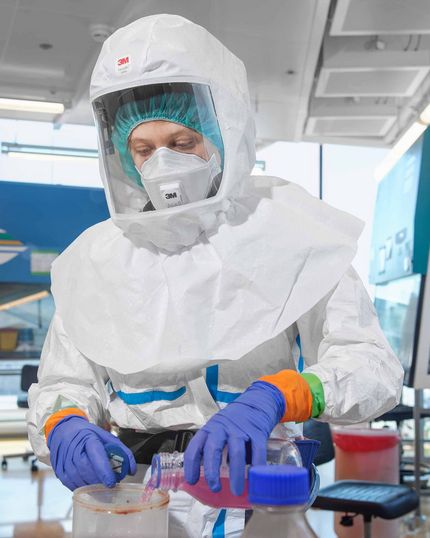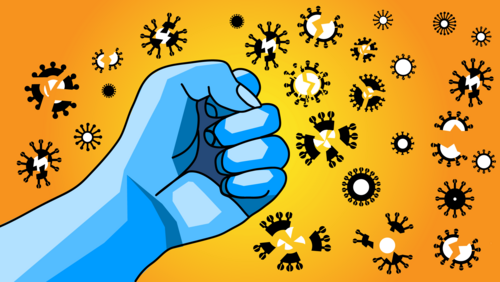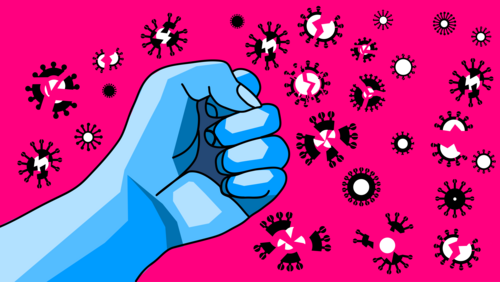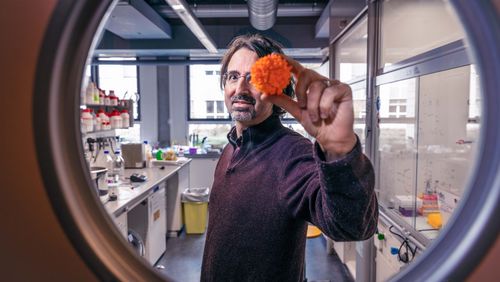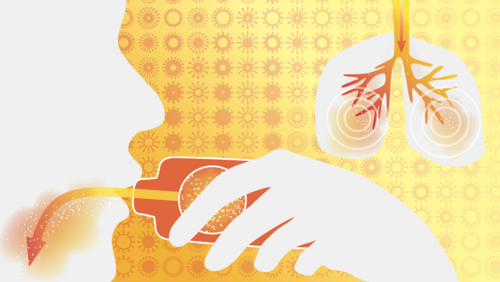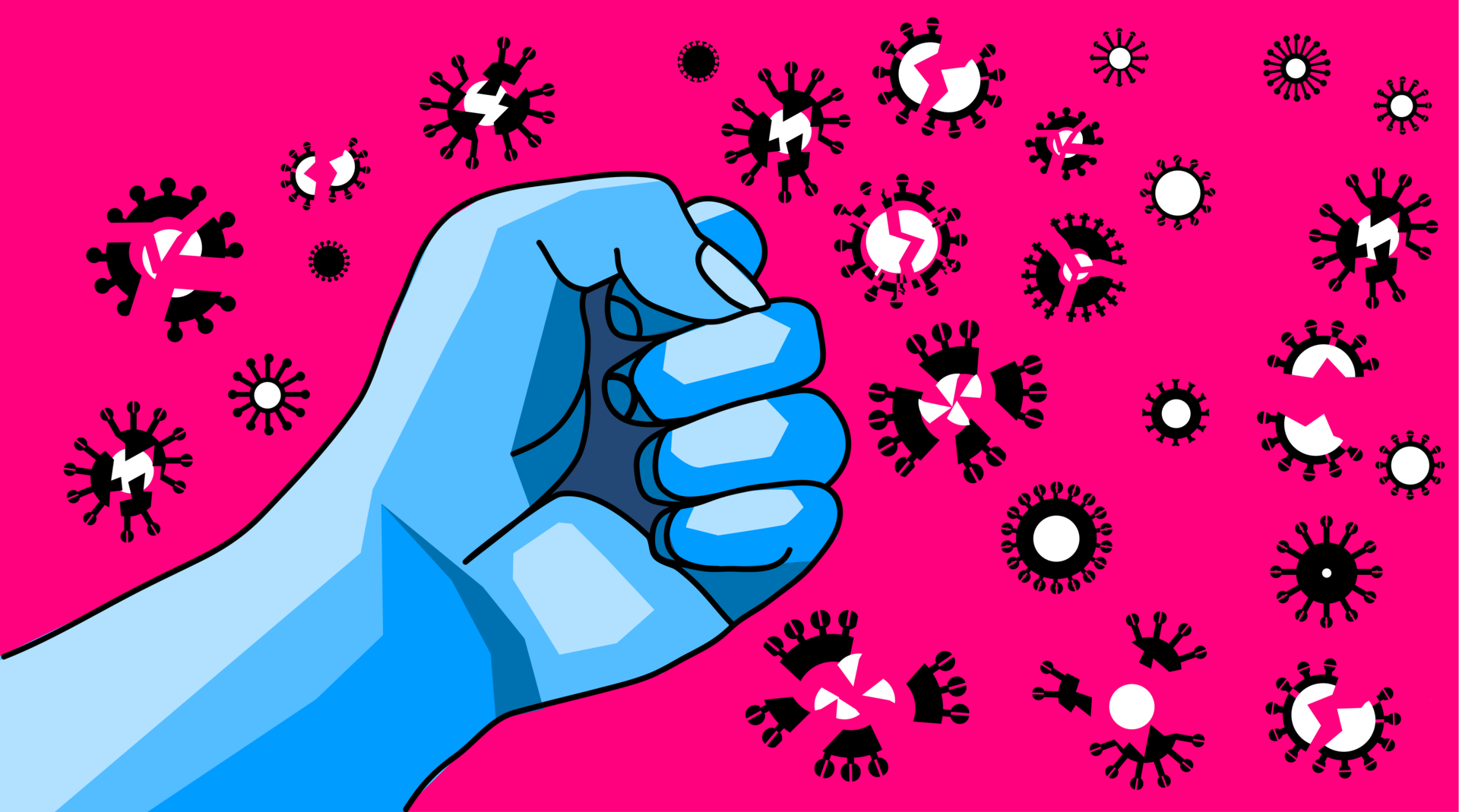
Covid drug with benefits
Very few effective Covid drugs are currently on the market. But now there’s hope that this could change in the future: researchers in a team led by Francesco Stellacci at EPFL in Lausanne have developed an antiviral agent that not only competes with the best available medications—it’s even effective against other kinds of viruses.
Infectious diseases are caused by various kinds of pathogens, the most common being bacteria and viruses. In the case of bacterial infections, a whole arsenal of drugs has been developed, some of which—so-called broad-spectrum antibiotics—are effective against a wide range of bacteria. But when it comes to viral infections, researchers have met with less success. To be sure, antiviral drugs exist, but they each target only a specific type of virus—and some have low efficacy.
The research group led by Francesco Stellacci at the EPFL Supramolecular Nano-Materials and Interfaces Laboratory in Lausanne want this to change. The team, which receives funding from the Werner Siemens Foundation (WSS), are developing antiviral agents that can treat a wide range of viruses—in other words, a broad-spectrum antiviral. Their new antiviral agents are designed to attack viruses already before they have a chance to enter a cell and replicate.
In their work, the researchers modify cyclodextrins—a specific type of sugar molecule—with several water-repellent chains of carbon and hydrogen atoms. Due to their chemical end groups, these finger-like protrusions attract viruses, attach themselves to them, and then exert such strong mechanical pressure that the viral envelope is destroyed. In contrast to conventional antiviral drugs, the new development not only prevents viruses from replicating: it also effectively and irreversibly destroys them. The viral remains are then disposed of by the immune system. And because all the action is extracellular, the human cells themselves remain intact and unchanged.
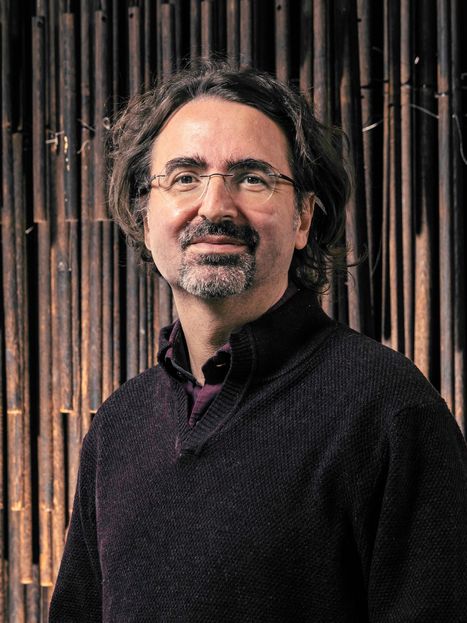
Redesigning the molecular structure
Several of the molecules developed by the researchers have proven very promising against influenza, RSV or herpes viruses. “However,” Stellacci says, “we’ve observed that, for some reason, the antiviral based on cyclodextrin isn’t very effective against the SARS-CoV-2 coronavirus. That’s why we've begun developing molecules with a different structure.”
The simplest chemical compounds to which the virus-binding carbon-hydrogen chains can be attached are so-called benzenes—ring-shaped molecules that, in their basic form, are made up of six carbon and six hydrogen atoms. In a study recently published in the journal ACS Central Science,* the researchers produced an entire series of benzene compounds and equipped them with three to six “tentacles” for catching viruses.
Some of these compounds demonstrated a strong antiviral effect, and one molecule—which the researchers named B6C11S—is believed to be particularly promising. After initial tests on herpes viruses, Stellacci and his team used this molecule to conduct in vivo experiments on golden hamsters, which are the most reliable animal model for SARS-CoV-2. “We produced a spray containing our agent and had infected animals inhale it,” Stellacci explains. “The experiment set-up is very similar to how people inhale medications—using asthma pumps, for example.”
The researchers compared their new molecule with Nirmatrelvir, the antiviral agent active in Paxlovid, which is currently the best medication for treating SARS-CoV-2 infections. It’s also the drug recommended by Swissmedic, Switzerland’s regulatory authority, for early treatment to prevent severe cases of Covid in high-risk patients.
Equal efficacy, greater versatility
In animal testing, B6C11S matched Nirmatrelvir in terms of efficacy: “Both agents helped the animals recover from an infection much faster than when no medications were administered,” Stellacci explains. “But compared to Nirmatrelvir, we found that our drug caused less severe damage to the lungs, something that can typically cause the animals to experience fatigue, even after recovering from the infection.” In addition, unlike Nirmatrelvir —and this is the big advantage of the EPFL team’s broad-spectrum antiviral—B6C11S is also effective against several other kinds of viruses, including influenza, RSV, herpes, hepatitis, HIV or the Epstein-Barr virus.
“We’re really pleased with the molecule’s efficacy,” Stellacci says, and he adds that toxicology testing is the next priority to ensure that B6C11S is safe to use in, and tolerated by, humans: “We’ve already carried out some tests on cell cultures. Now we’ll move on to hamsters and other animals.” Clinical trials can only begin once the agent is declared safe for use in humans. Indeed, it will take years before all required phases have been completed and a medication can be approved.
Parallel to this work, Stellacci and his team will also continue their search for potential new agents. “Maybe there are even better and more effective molecules than B6C11S,” he says. Another research aim is to understand why the original molecules based on cyclodextrin were less effective against SARS-CoV-2—and why some of the new agents kill viruses, while others merely inhibit their replication. And so, the virus hunters of Lausanne will have plenty to keep them busy in the foreseeable future.
